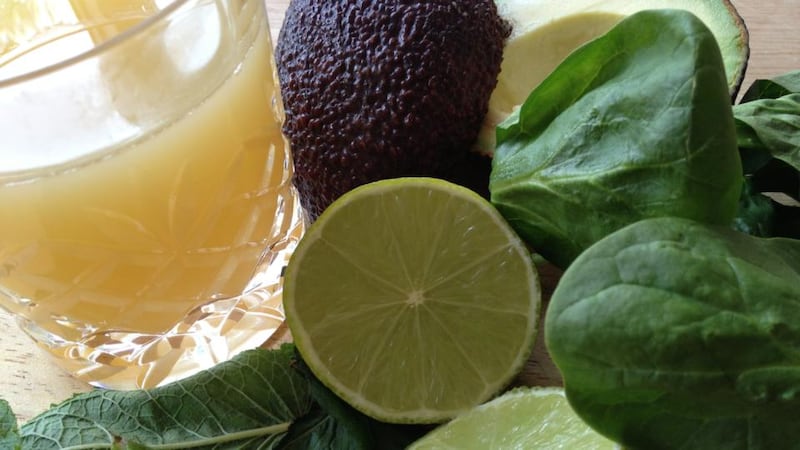Tucking into the super-sized Danish or sausage roll at elevenses isn’t the best strategy during pregnancy, especially if it’s coupled with that innate instinct of “not overdoing it” vis- a-vis activity. It can frequently result in indulging in extra calories your body just doesn’t need. So, you stash them away on your tum and bum, sometimes for the long term.
Pregnancy can be tiring enough without having to focus on eating more nutrients in every mouthful of food. Yet this is essentially what you need to concentrate on. In saying that, however, you are not “eating for two” volume wise.
Think “quality” not “quantity”. Your calorie requirement doesn’t really increase at all in the first three months of pregnancy.

In the second and third trimesters, women do have slightly higher calorie requirements, but it’s only about an extra 300 calories over the entire day.
As a general guideline, women can expect to gain the least weight during the first trimester (roughly one to five pounds) and then gain roughly a pound a week in the second and third trimesters.
If you were overweight before conception, optimal weight gain would be slightly less.
Three servings
The recommended intake of calcium during pregnancy has recently changed in Ireland. Previously we advised mums-to-be to consume five daily servings of low-fat, calcium-rich foods, but the recommendations are now the same as they are for everyone else – to aim for three daily servings.
Three servings looks like this; a glass of low-fat vitamin D fortified milk, a low-fat 125g pot of yoghurt and a matchbox size of reduced-fat cheese such as mozzarella, feta or edam.
Your baby needs calcium to build strong bones and teeth; to grow a healthy heart, nerves, and muscles; and to develop a normal heart rhythm and blood-clotting abilities.
If you don’t get enough calcium in your diet, your baby will draw it from your bones, which may impair your own health later on and increase your risk of osteoporosis. Only eat pasteurised milk and dairy products.
Other changing guidelines focus on caffeine intake. The Food Safety Authority of Ireland (FSAI) has reduced the upper limit from 300mg to 200mg of caffeine per day throughout pregnancy.
This can include one brewed coffee and two cups of tea, but the exact amount of caffeine will vary according to cup size, brewing methods and brand of tea or coffee you drink.
High caffeine intakes have been associated with an increased risk of miscarriage and low birth weight infants.
Safe seafood
Seafood during pregnancy is another cause of alarm for some women. It is a good source of protein and iron. The omega 3 fatty acid in oily fish is essential for the baby's brain development. However, concern has arisen over the mercury content of fish. So what's safe?
The FSAI advises pregnant and breastfeeding women, women of childbearing age and young children to limit their intake of predatory fish (shark, swordfish, marlin, and so on) while continuing to consume other fish as part of a balanced diet, and to limit consumption of tuna to one fresh tuna steak or two 8oz cans per week.
So there is no need to avoid fish completely. Everyone should aim to eat two portions of fish per week, one white and one oily fish such as salmon.
Finally, a word on peanuts. In the past, women were advised to avoid eating peanuts during pregnancy if there was a history of allergy in the immediate family.
This advice has now changed as emerging research suggests there is no clear evidence that eating or abstaining from peanuts affects the chances of your baby developing a peanut allergy.
So if you have enjoyed peanuts occasionally before your pregnancy, you can continue to choose to do so as part of a healthy diet, unless you are allergic or have been advised by your doctor or dietitian not to do so.
Today’s recipes are chosen to help you meet the demands for essential nutrients during pregnancy; such as folate, omega 3 and iron.
But you don’t have to be pregnant to enjoy them. I’ve selected easy, no-fuss recipes which have great nutritional profiles for all your family members.
Baked Salmon topped with Mediterranean Vegetables
With thanks to Mark Doe, Just Cooking Cookery School, Co Kerry.
This dish is high in vitamin C, vitamin D and folate.
Serves 4
Ingredients
1 tablespoon of olive oil, plus extra for greasing
1 small onion, finely chopped
1 red pepper, sliced
1 yellow pepper, sliced
3 tomatoes, sliced
2 cloves garlic, crushed
2 tablespoons balsamic vinegar 6 basil leaves, shredded
Salt and pepper
1 courgette, sliced
4 portions of salmon fillet, 180g each in weight.
Method
1. Preheat the oven to 180°C, gas mark 4. Lightly grease a shallow oven-proof dish.
2. Heat the oil in a frying pan and lightly fry the onions, garlic and peppers until soft.
3. Place the fish in the dish, season with a little salt and pepper and top with the courgettes and tomato.
4. Top the salmon with the pepper and onion mix.
5. Drizzle with a little olive oil or rapeseed oil, scatter the basil leaves on top and cover with tin foil.
6. Bake in the oven for 18-20 minutes until the fish flakes when lightly pressed.
You may not be drinking alcohol while pregnant, but it doesn't mean you can't fake it. This super green smoothie, concocted by Dee Daly, could even pass for a healthy mojito.
Super green smoothie
Serves 2
Ingredients
1 avocado (must be ripe)
400ml glass of chilled apple juice (buy the pressed juice, not from concentrate)
A small handful of mint leaves
Juice of ½ to 1 lime
Large handful of baby spinach leaves
Method
1. Put all the ingredients in a tall jug or blender and mix until smooth.
2. Taste, as you may need to add more lime or mint.
3. If it is very thick, add more juice or some cold water and blend again.
Paula Mee is lead dietitian at Medfit Proactive Healthcare and a member of the INDI. pmee@medfit.ie Tweet @paulamarymee









